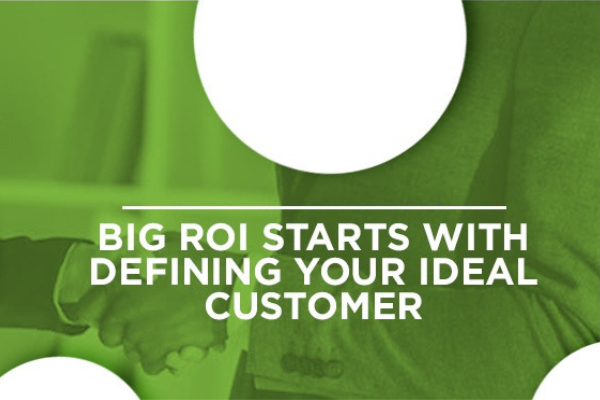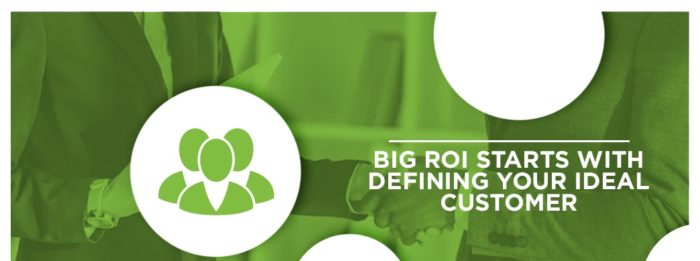
Jump to:
- What Is an Ideal Customer Profile?
- How Do You Identify Your Ideal Customer?
- How Do You Attract Ideal Clients?
- How Do You Identify New Customers?
- How Does Defining Your Ideal Customer Boost Your ROI?
Every business wants a big return on the investments they make in marketing and sales. To accomplish that, you need to attract prospects and customers who will provide value to your company. Often, those customers are the same ones to which you can provide significant value.
Unless you have an unlimited marketing budget, you need to focus your efforts on the customers who will provide the greatest value. To do so, you need to define your ideal customer, which starts with creating an ideal customer profile (ICP).
What Is an Ideal Customer Profile?
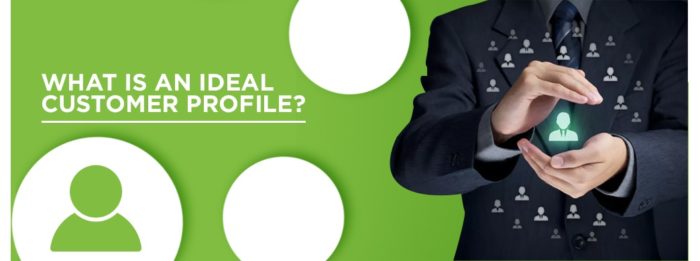
What is an ideal customer profile? It’s a description of the kind of customer who would benefit the most from your offering and provide the most value to you in return. Your ideal customer, as defined in your ICP, is the type of customer you’ll focus your resources on acquiring within a specific timeframe.
If you’re a business-to-business (B2B) company, your ICP will take the form of a hypothetical business or organization. If you’re a business-to-consumer (B2C) company, your ICP will be a description of a type of customer. You’ll describe the characteristics of this business or type of customer in detail in your profile.
You can create different ideal customer profiles, or ICPs, for different situations, goals and offerings. Your ICP might also change over time as conditions change.
It’s important to note that an ICP is not the same as a buyer persona. Any buyer personas you create should fit within your ICP. If the ICP is a description of an organization, the buyer personas will be descriptions of people within those organizations, such as marketer Max or CEO Sally. If the ICP is a description of a type of consumer, the buyer personas will be more detailed examples of consumers who fit within that category.
How Do You Identify Your Ideal Customer?
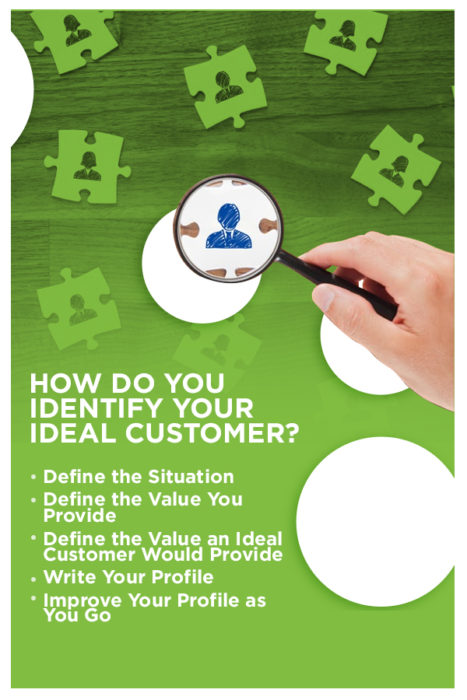
So, how do you go about creating this ICP? Here’s a process to follow.
Define the Situation
Before you can create an ICP, you need to clearly define the situation for which you’re building the profile. Doing so will keep your process focused. It will also help you avoid the fear of missing out because you can create other profiles for other situations. For each situation, it’s best to create a detailed, focused profile. Define the following aspects of your situation:
- Your goal: Define the goal you want to achieve with your ICP. It might be a particular amount of new revenue, new customers, customer advocates or something else.
- Your timeframe: Decide on the timeframe in which you want to accomplish your goal. This factor will help you make sure you’re on track.
- Your current capabilities: Take note of your capabilities, and make sure your goal is achievable with the timeframe you identified.
Define the Value You Provide
One significant part of defining your ICP is determining the value that you would provide to an ideal customer. This value can vary significantly depending on what your products and services are, what sector you’re in and other factors.
If you’re a B2B company, you might provide value by helping your clients make more money, reduce their expenses, increase efficiency, improve their customer service or improve employee morale. If you’re a B2C company, you might help your customers save time, save money, learn a skill, enjoy themselves, become healthier or improve their relationships.
There’s no end to the list of ways companies can provide value to their customers. You just need to figure out which ones apply to you.
Define the Value an Ideal Customer Would Provide
You’ll also need to define the value an ideal customer would provide to you. Like with the value you provide your customers, this element can vary widely.
The obvious answer is that your clients pay you for the products and services you provide for them, but there are also lots of possible secondary benefits. For example, an ideal customer might help you get new customers by referring them to you, writing a testimonial you can put on your website or sharing your social media content. They might be a source of valuable insights that you can use to grow your company and improve your products. You might also value having customers that are easy to work with and don’t require extensive customer support.
Profile Your Best Customers
An excellent way to gather information to help you with identifying your ideal customer is to take a look at the customers you already have. Choose 10 of your best customers, and figure out what makes them so good. Often, you can find the answer in the things they have in common.
Start with the information you have on hand about your customers. This data could include basic information such as their sector, where they’re located and their size in terms of annual revenue or number of employees. Look at your records and determine what value they provide to your company. Then, interview your best customers about their buying process and how your company offers them value.
Write Your Profile
Next, using the information you came up with and what you gathered by profiling your best customers, write your ICP. How would you define your target customer? Here’s where you’ll nail down a description. Define basic information about them, including their sector, location and size, if relevant. You should also include information about their budget for your product or services.
Also, define aspects such as their short-term and long-term business goals, their brand values and their biggest pain points. Include how these problems impact their operations. Then, detail what the ideal solution to these issues would be and how your product can provide for them.
Include information about their buying process as well. Write about how customers make decisions and who the most significant decision-makers are. Note how they do their research and what the biggest decision-making factors are for them. Perhaps they rely heavily on referrals. They might also want a demo of the product before purchasing it.
Improve Your Profile as You Go
The fact is, you probably won’t get everything right the first time around. That’s okay. You can adjust your ICP as you work with more customers and learn more about the value you provide to them as well as the value they provide to you. Review your ICP regularly to make sure it’s still accurate. To check how well your profile is working, examine your financial data, your website traffic, sales activity and any customer complaints.
How Do You Attract Ideal Clients?
Once you’ve defined your ideal customer, where do you go from there? You need to take the information and use it to bring in new customers that fit the ICP. You also need to retain your existing ideal customers. The following tips will help you to use your ICP to attract ideal clients and boost your revenue.
Update Your Staff
Your ICP won’t do you any good if no one within your organization knows about it. Once you’ve developed an ICP, make sure you share it with all relevant team members, especially customer-facing ones such as those in sales and marketing. Doing so will keep everyone on the same page.
By sharing your ICP with your staff, you’re enabling them to use it to guide their efforts and making sure the efforts of your entire team are aligned toward reaching your ideal customer. Be sure to update your staff as you make changes to your ICP.
Develop Strategies
Once you have an ICP, you can use it to guide your strategies for reaching and retaining those ideal customers. Your ideal customer profile can act as a guiding force for strategies in a range of business areas, including marketing, sales and product development. All of these strategies should be focused on meeting the needs of these ideal customers and showing them that you can provide the solutions they want. This is a good time to start developing buyer personas, which you can use to guide your marketing efforts.
Personalize Your Messaging
Your ICP should include information about your ideal customers’ needs and pain points — at least the ones that your product can solve for them. It might also include information about their values, interests and preferences. You can use this information to create marketing and sales materials that appeal to your ideal customers.
Now that you know who these customers are, you can tailor your messaging to them to increase the chances of engagement. For instance, if you’re selling business software and you know that your ideal customer values ease-of-use in their software, you can highlight that aspect of your product in your advertisements.
Target the Right Audience
When you’re setting up ad campaigns, you can use the demographic and psychographic information in your ICP to target your ads. For example, if your ICP says that your ideal customer is between the ages of 18 and 24, you should specify that you want your ads to reach only people in that age range. This specification will prevent you from wasting ad dollars on non-ideal customers, and it will improve your conversion rates.
Improving your targeting can help save a substantial amount of money. In fact, marketers estimated that they waste an average of 26 percent of their budgets on the wrong strategies and channels.
Keep up With Communication
You need to convince your prospects to purchase your product before they buy it, but don’t let that be the last communication you have with your customer. After the purchase, reach out to them to ask for feedback, offer technical assistance or send them additional offers.
If you’re a B2B company, you may need to work with your customers on implementing your solution so that they can get the value they need from it. This process will help keep your customers happy and improve your reputation.
In the B2B space, after your customer has received the value from your product, you need to continue to sell them on the fact that your solution provided them value. Doing so helps to prevent them from accidentally attributing the value to something else, and it makes them more likely to keep being a loyal customer.
How Do You Identify New Customers?
Even once you’ve starting to pull in new ideal clients, you still have opportunities to expand. There are various strategies you can use to identify new customers and expand your audience, potentially even into new areas.
Use Lookalike Audiences
One of the best tools marketers have for finding new prospects is lookalike modeling. This process uses machine learning to analyze an audience and identify its characteristics. You could, for instance, use an audience consisting of customers that fit your ICP. The tool can then find new prospects that have the same characteristics.
The lookalike audiences you create might end up fitting your ICP since they’ll have characteristics similar to your best customers. You might also find some new information about the customers most likely to be interested in your products and services.
Update Your ICPs
As you learn more about the customers who find the most value in what you provide, be sure to update your ICP. You might find this information through lookalike modeling or some other means. Updating your ICP can help you to identify new valuable customers who you may not have even considered before.
If you find that there’s a new group of customers that you could provide value to, you can also create new ICPs. Remember, you can have multiple ICPs for different offerings, products and situations. Analyzing your audiences can help you uncover new opportunities for growing your customer base and expanding into new areas.
How Does Defining Your Ideal Customer Boost Your ROI?
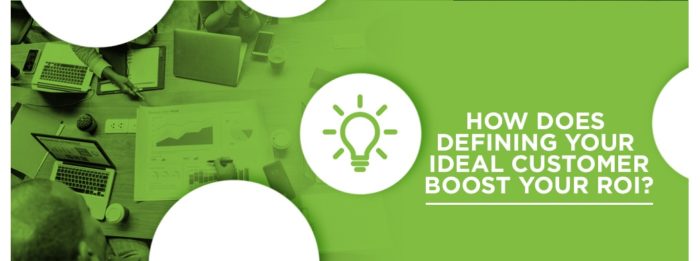
Defining your ideal customer can help boost your ROI. Here’s how:
- Improved conversion rate: Defining your ideal customer allows you to focus your resources on those leads that are most likely to convert. Doing so reduces ad waste and leads to higher conversion rates. Essentially, you spend less but acquire customers that will bring in higher value.
- Extended customer lifetime: By reducing the amount of time you spend on non-ideal customers, you give yourself more time to build relationships with ideal ones. Your ICP also helps you to know your customers better, making it easier to tailor your offerings to their needs. This strategy helps you build trust with customers, which leads to having loyal customers who enable you to earn reliable revenue. Acquiring a new customer costs from five to 25 times as much as retaining a current one, so extending customer lifetime can improve your ROI.
- Increased referrals: When you have loyal customers who get value from your products or services, they’ll be happy to recommend your product to others. An ideal customer is worth more to you than what they pay you, as obtaining one ideal customer can lead to obtaining more down the road.
- Reduced expenses: Sometimes, working with a non-ideal customer can lead to increased expenses because they end up needing extra assistance or otherwise costing you additional resources. They may also return products or cancel their subscriptions with you after a short time because your product wasn’t right for them. When this situation occurs, the money you spend acquiring the customer is largely wasted. Having an ICP can help you avoid those unnecessary expenses.
How Lotame Can Help
Using a data solutions platform can help you to define your ideal customer and then put those insights into action. You can use Lotame’s next-generation platform, Spherical, to collect and analyze the data you obtain from your customers to determine what characteristics your best customers have in common. You can then import data from second-party and third-party sources to expand your audiences. Finally, your can use your data solutions tool as a hub from which you can activate your data for targeted advertising, content personalization and more.
Lotame is a global technology company that helps marketers and media owners use data to engage existing customers and attract their next best. We create smarter, faster, and easier ways to drive growth and derive value from customer data — whether you have it or need it. Learn how our next-generation data platform, Spherical, can help.

